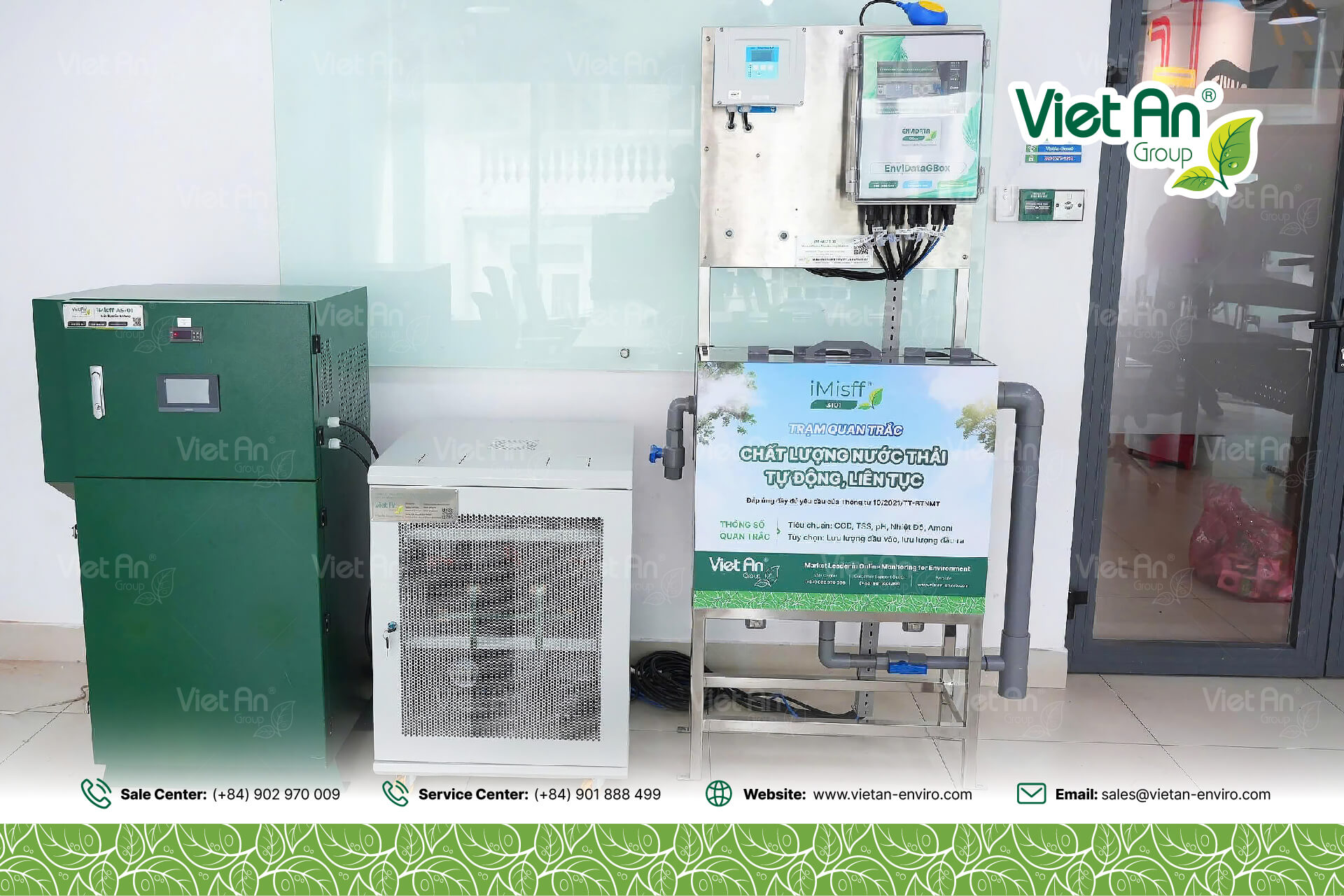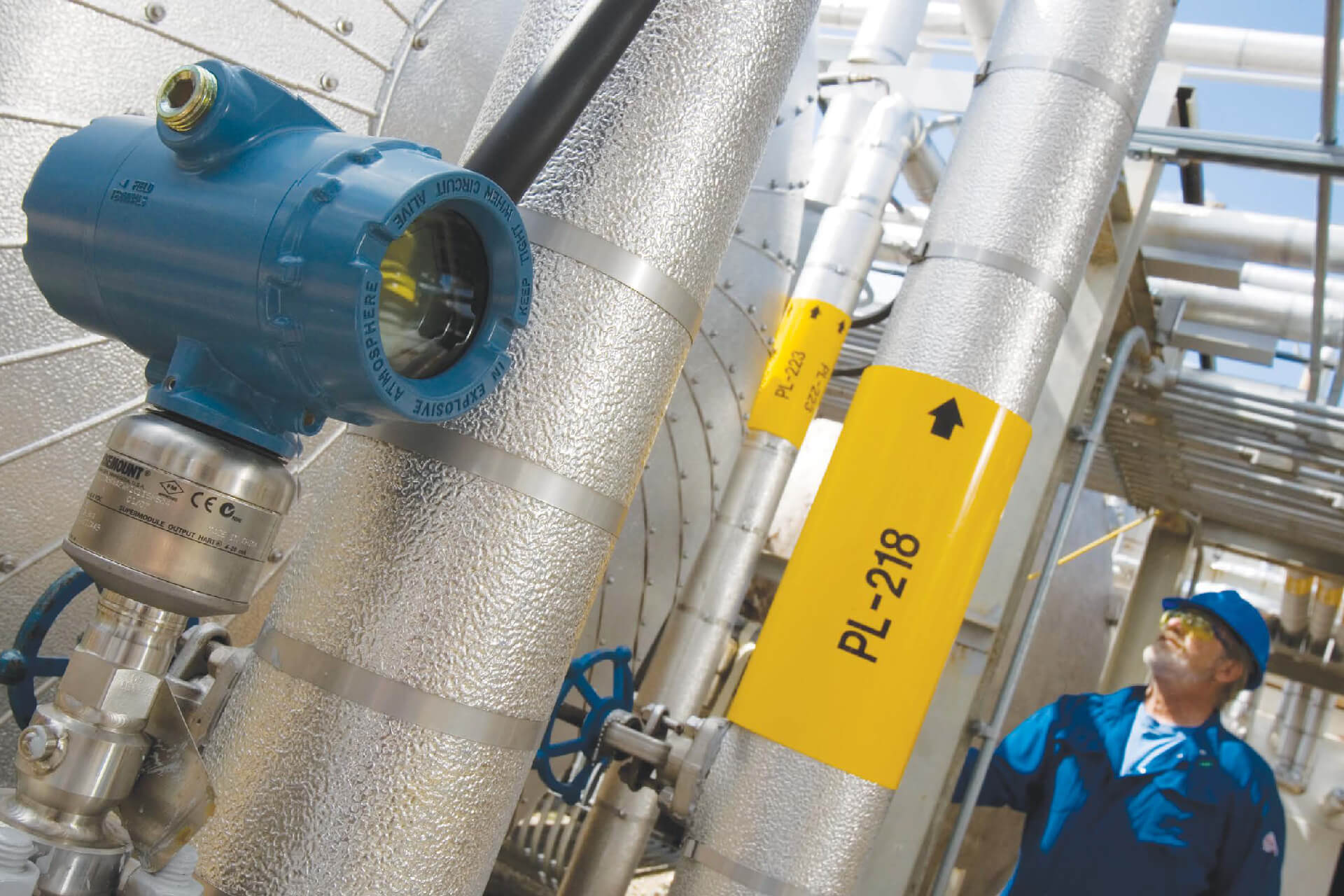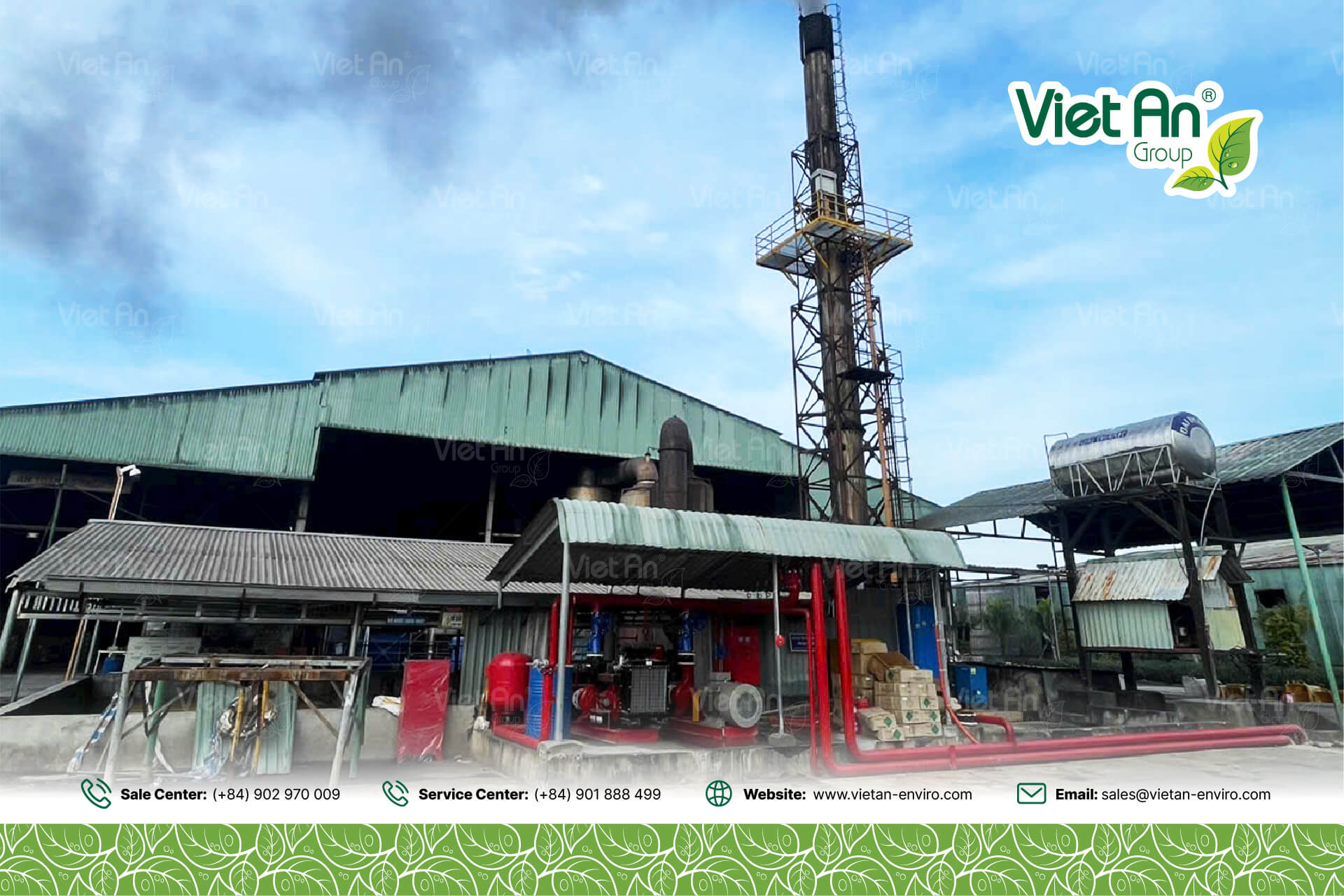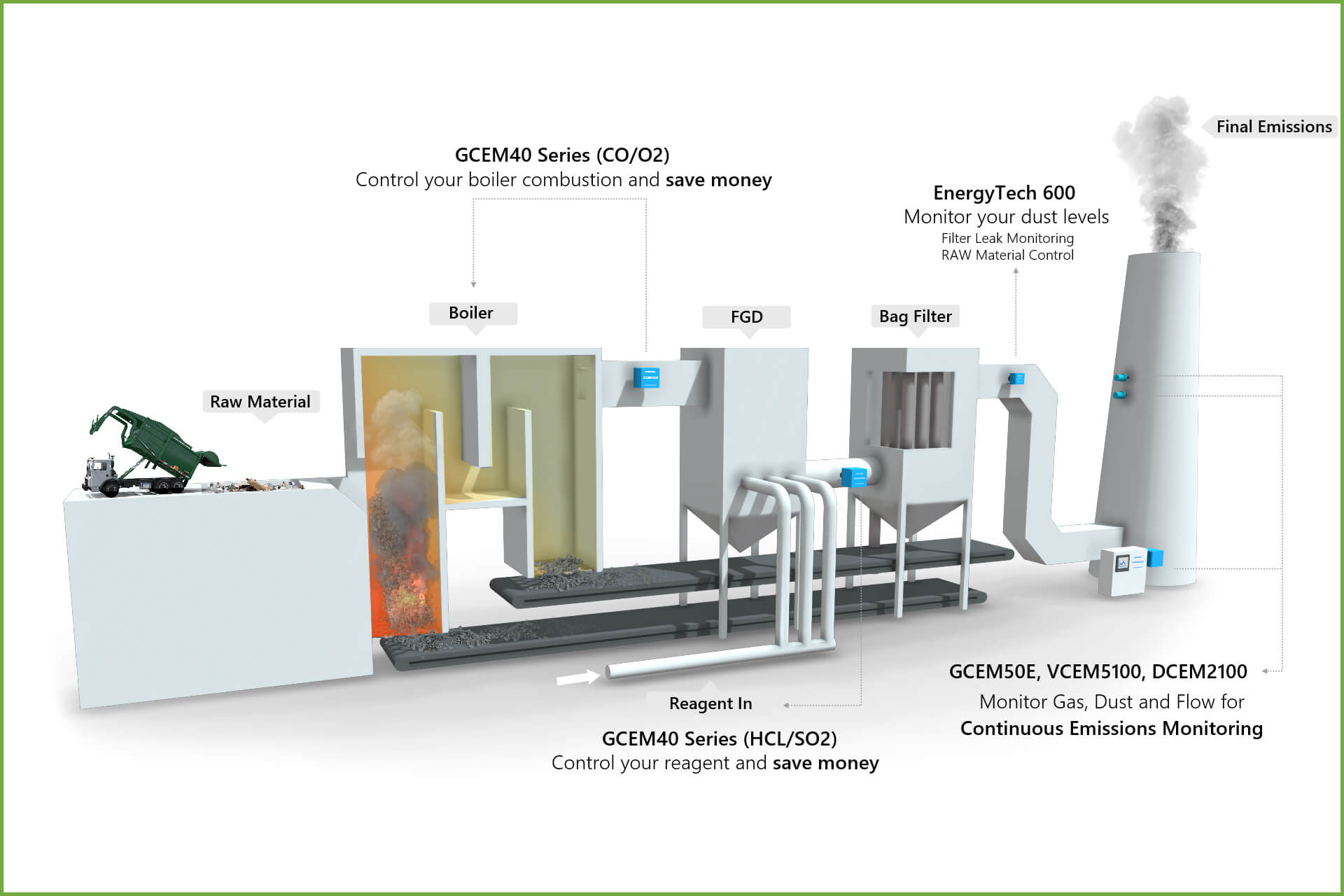What is Cation Conductivity and Why is it Important?
Cation conductivity, also referred to as acid conductivity or post-cation exchange conductivity,is a critical parameter in the steam-water cycle of power plants.
It provides highly sensitive detection of corrosive anions, such as clorua (Cl-), sunfat (SO4 2-)while also responding to less aggressive bicarbonate ions derived from CO₂, which may be considered an influencing factor.
Electrical conductivity measurements are highly sensitive to temperature fluctuations Therefore, accurate results are achievable only when temperature is precisely measured and controlled.
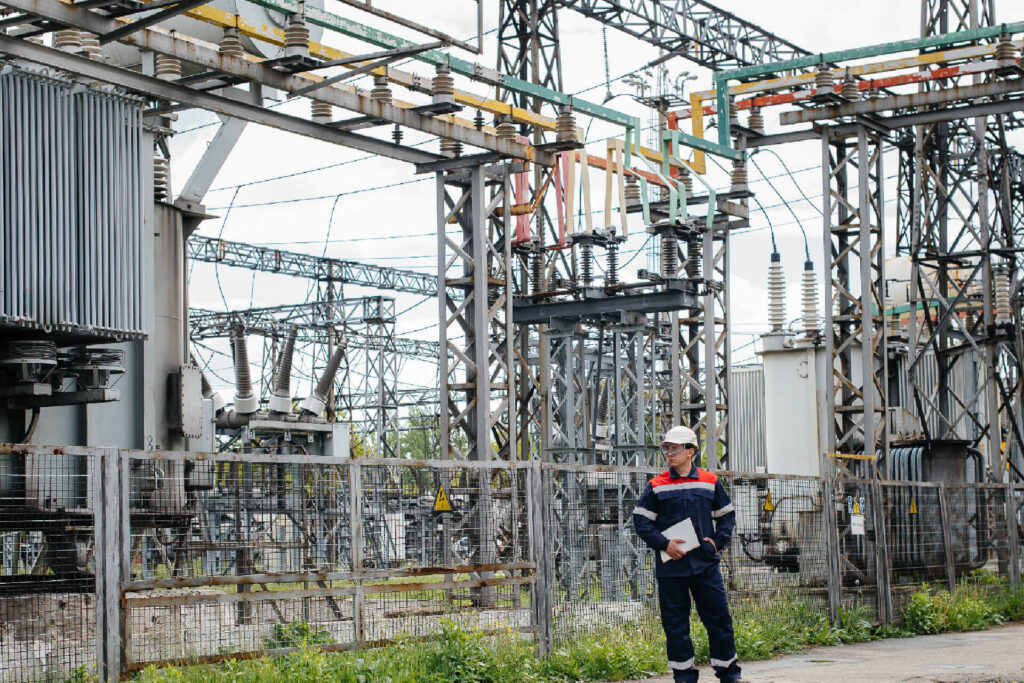
Measurement of Cation Conductivity
To measure Cation Conductivity,, cần loại bỏ ammonia (NH₃) must be removed thông qua through ion exchange to enhance the sensitivity of detecting corrosive anions.This process acts as an "amplifier," enabling more effective monitoring of corrosive substance concentrations.
- Degassing Unit:In some cases, a degassing unit is employed to remove CO2resulting in degassed cation conductivity or degassed acid conductivitymeasurements, which ensure greater accuracy.
- Temperature FactorElectrical conductivity is highly sensitive to temperature sensorsTherefore, precise temperature measurement is essential to guarantee reliable results.
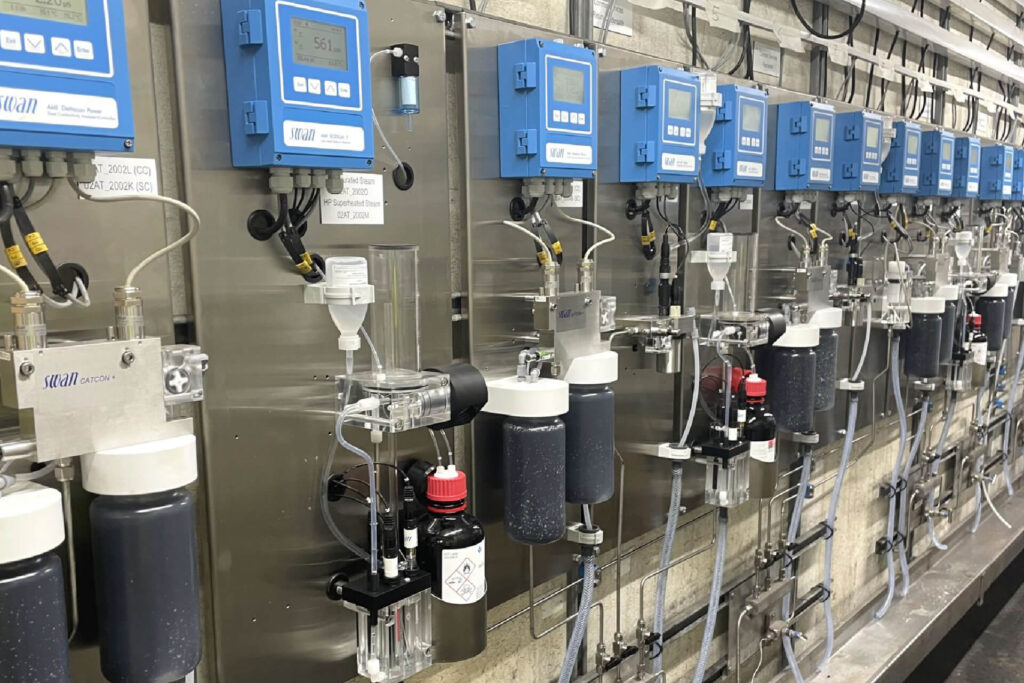
Solutions for Measuring Cation Conductivity
Although cation conductivity measurement is recognized as the most effective method for monitoring corrosive substances, it is also one of the most susceptible to external influences.
This susceptibility primarily arises from the “ion exchange resin column.”These issues can be mitigated by using high-quality ion exchange resin beads, performing regular maintenance, and carefully controlling the sample flow rate.
The cation resin beads are capable of removing any positively charged ions in the water, known as cations. These cations are subsequently replaced with H⁺ ions. Once the water sample has been filtered and is nearly free of corrosive impurities, cation levels are significantly reduced.
In cases where sodium chloride (NaCl) is present in the sample, the Na⁺ ions are removed from the water as the sample passes through the cation exchange column. The Cl⁻ ions then react with H⁺ ions to form hydrochloric acid, which exhibits higher electrical conductivity.
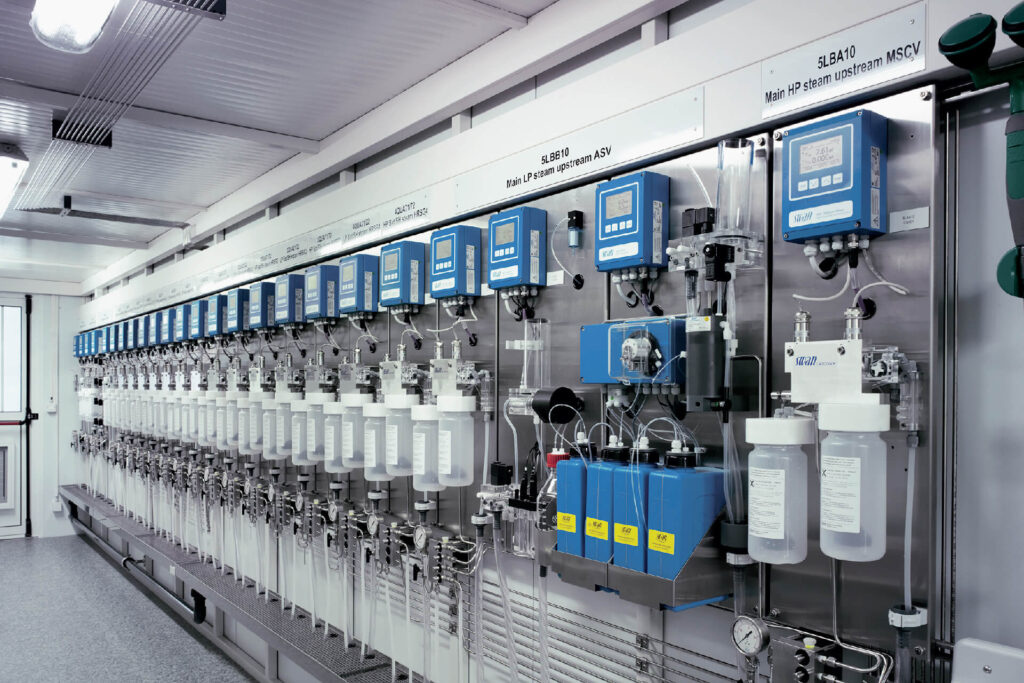
In a power plant, Cation Conductivity (CC) measurement enhances the detection of anions present in water, enabling plant operators to assess the purity of steam at a given time. Most steam turbine manufacturers specify that cation conductivity readings should be maintained at a minimum of less than 0.3 µS/cm.
To solve this, the engineering team at Viet An has conducted extensive research and developed solutions, proudly introducing SWAN: “AMI DeltaCon Power” or “AMI DeltaCon Degass”to simplify the monitoring of corrosive substances.
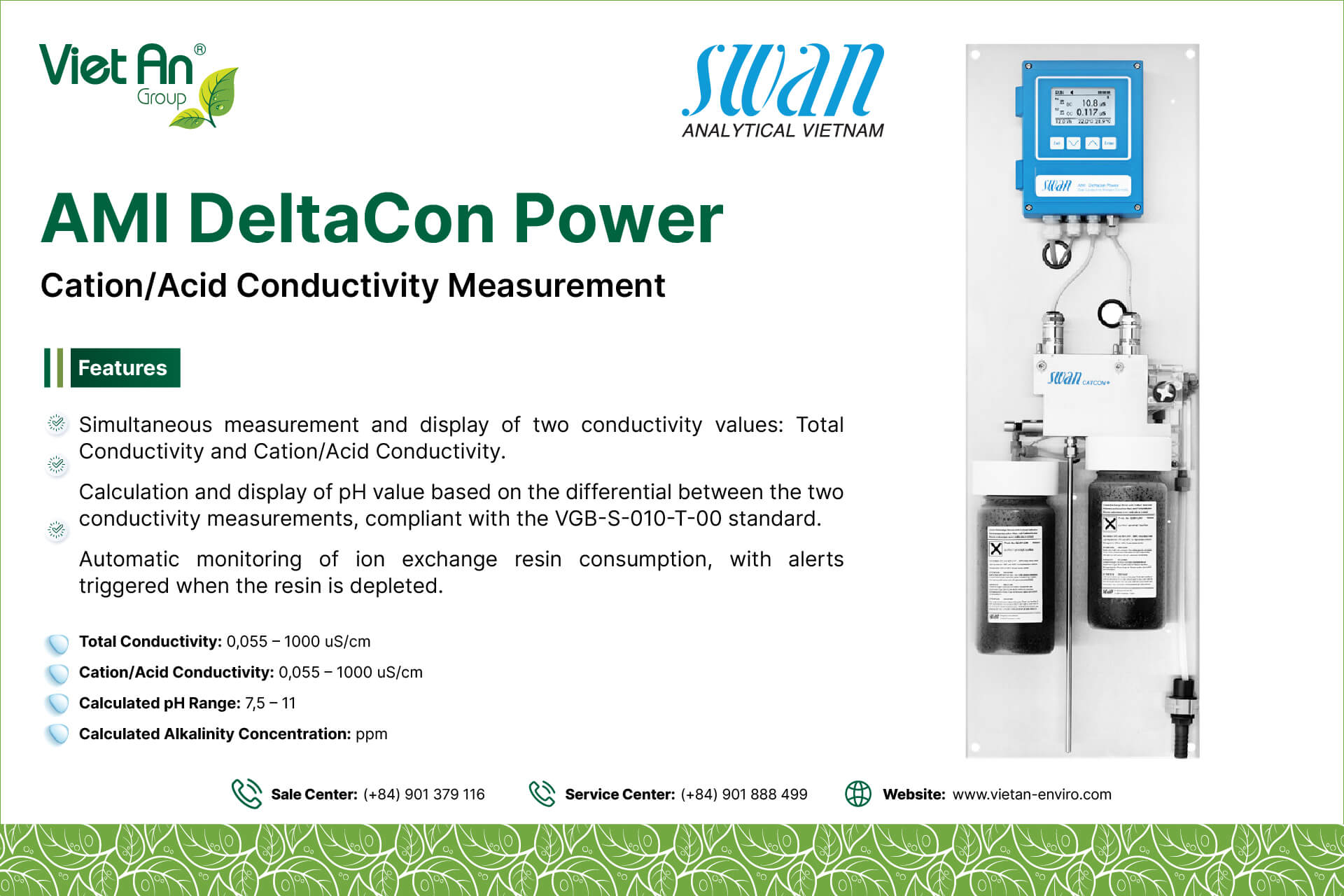
AMI DeltaCon Power and AMI DeltaCon Degass
Brand: Swan Analytical Instruments AG
Origin: Switzerland
Viet An – A Trusted Partner in Water Quality Analysis
As the official distributor of advanced water quality analysis equipment from leading European brands such as Swan (Switzerland), Việt An Group is committed to delivering stable solutions and optimized operational costs.
With a team of highly experienced engineers, we not only supply equipment but also partner with our clients throughout the system’s lifecycle—from technical consultation and installation to regular maintenance and calibration.

Việt An – Thị phần số 1 Việt Nam về Giải Pháp Quan Trắc Môi Trường và Đo Lường Công Nghiệp
🔘 Head Office (Ho Chi Minh City)
No.4E, Street 6, An Phu Ward, Thu Duc City, Ho Chi Minh City
(Sales) +84 902 970 009 | (Service) +84 901 888 499
🔘 Northern Viet An
Lô 33, khu BT4-1, khu nhà ở Trung Văn, phường Trung Văn, quận Nam Từ Liêm, Hà Nội
(Sales) +84 901 851 116 | (Service) +84 901 888 499
🔘 Central Viet An
No.5A Mai Xuan Thuong Str., Hoa Khe Ward., Thanh Khe Dist., Da Nang City
(Sales) +84 898 119 116 | (Service) +84 901 888 499
🔘 Việt An VP-Hà Tĩnh
03 Mai Thúc Loan, phường Kỳ Liên, Thị xã Kỳ Anh, Hà Tĩnh
(Sales & Service) +84 938 442 414





